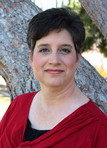Laurisa White Reyes's Blog, page 117
January 5, 2014
MY 2014 TO BE READ LIST
* Win a collection of 6 young adult novels!
* Book Review: Insurgent by Veronica Roth
* Writer 2 Writer: How To Write a Real Page-Turner
I begin every new with two activities: First, I clean out my bookshelves. And second, I make a list of the books I plan to read next.
I cleaned out my shelves on New Year's Day and gave away 5 grocery bags full of books, some to my school librarian friend, some to Deseret Industries, some I posted on Paperbackswap.com, and some I'm setting aside for my son's Eagle Scout project for Book Roots in Los Angeles.
It always feels so good to have space on my shelves. Of course, that space will very quickly be filled with brand new books I'm dying to read.
So I am now putting together that list of books I have every intention of reading in 2014, some are books I already own. Some I'll have to purchase.
My goal is to read 50 books in 2014. I read 61 in 2013, overshooting my goal by 21 books! So here is my tentative starter list. What's on yours?
THE CHOCOLATE WAR by Robert Cormier
WOOL by Hugh Howey
CITADEL by Kate Mosse
SUNRISE by Mike Mullin
CRESS by Marissa Meyer
EARTH AWAKENS by Orson Scott Card
UNSOULED by Neal Shusterman
INFERNO by Dan Brown
GILT by Katherine Longshore
POSSESS by Gretchen McNeil
ENDERS by Lissa Price
PAPER TOWNS by John Green
FALSE PRINCE by Jennifer Nielsen
* Book Review: Insurgent by Veronica Roth
* Writer 2 Writer: How To Write a Real Page-Turner
I begin every new with two activities: First, I clean out my bookshelves. And second, I make a list of the books I plan to read next.
I cleaned out my shelves on New Year's Day and gave away 5 grocery bags full of books, some to my school librarian friend, some to Deseret Industries, some I posted on Paperbackswap.com, and some I'm setting aside for my son's Eagle Scout project for Book Roots in Los Angeles.
It always feels so good to have space on my shelves. Of course, that space will very quickly be filled with brand new books I'm dying to read.
So I am now putting together that list of books I have every intention of reading in 2014, some are books I already own. Some I'll have to purchase.
My goal is to read 50 books in 2014. I read 61 in 2013, overshooting my goal by 21 books! So here is my tentative starter list. What's on yours?
THE CHOCOLATE WAR by Robert Cormier
WOOL by Hugh Howey
CITADEL by Kate Mosse
SUNRISE by Mike Mullin
CRESS by Marissa Meyer
EARTH AWAKENS by Orson Scott Card
UNSOULED by Neal Shusterman
INFERNO by Dan Brown
GILT by Katherine Longshore
POSSESS by Gretchen McNeil
ENDERS by Lissa Price
PAPER TOWNS by John Green
FALSE PRINCE by Jennifer Nielsen
Published on January 05, 2014 00:00
January 3, 2014
CLEAR YOUR SHELF GIVEAWAY HOP
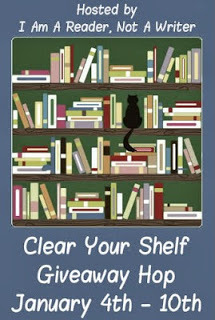
Welcome to the CLEAR YOUR SHELF GIVEAWAY HOP hosted by I Am A Writer, Not A Reader. If you haven't done a hop before, it's pretty simple. Just hop from one participating blog to the next for many chances to win. Complete least of participating blogs is below.
As some of you know, I am the Editor-in-Chief of MIDDLE SHELF: COOL READS FOR KIDS , a digital magazine featuring the best books for middle grade readers. (Subscribe for free HERE .) As such I receive many review copies of the latest releases. I normally donate these books to my local school library, but I've set aside some of these awesome books just for this event. The following titles happen to all be young adult novels (not MG):
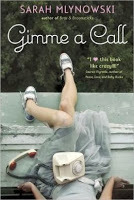
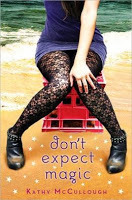
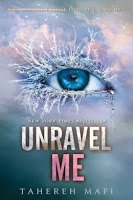
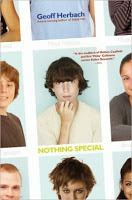
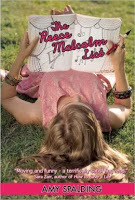
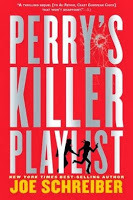
GIVEAWAY TIME!!!
To win the collection of titles above, just fill out the rafflecopter form below. To be eligible to win you must be a follower of this blog.
This giveaway ends on 1/10/14.U.S. residents only, please.a Rafflecopter giveaway
Published on January 03, 2014 17:00
BOOK REVIEW: ALLEGIENT by Veronica Roth
* Book Review: The Last Wild by Piers Torday
* How To Write A Real Page-Turner, Part IV
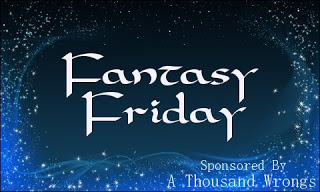
_________________________________________________________________
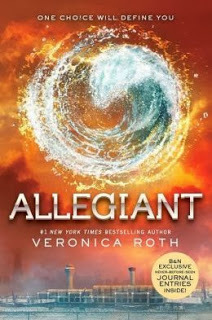 ALLEGIANT
ALLEGIANT
Veronica Roth
HarperCollins
544 pp.
Ages 14-17
What if your whole world was a lie?
What if a single revelation—like a single choice—changed everything?
What if love and loyalty made you do things you never expected?
The explosive conclusion to Veronica Roth's #1 New York Times bestselling Divergent trilogy reveals the secrets of the dystopian world that has captivated millions of readers in Divergent and Insurgent.
MY REVIEW:
I'll just be blunt. The third and final book in the Divergent trilogy just didn't do it for me. Sorry. I liked Divergent pretty well. Insurgent was okay. This was disappointing for two reasons, the first of which I can tell you, the second I can't.
Here is reason #1. Unlike books I and II, which were told from Tris's perspective, Allegient is told from two perspectives: Tris and Tobias. That is and of itself was fine, except that certain expectations were established in the first two books, and I felt that suddenly including Tobias's point of view was akin to changing the rules in the middle of the game. I knew the author had to have done it for a reason. I made two guesses as to what that reason might be, and I was right on both counts. In other words, it felt contrived, and I, as the reader, felt manipulated.
There are a lot of shocking big reveals in book three that, quite frankly, are not even hinted at in the first two books, which leads me to believe that the author had no clue how this trilogy would end when she started writing it. There was some good action in the beginning and at the end of the story, but I slogged through the middle, and the end fell completely flat for me. That is reason #2, and you'll just have to read it yourself if you really want to know why.
But now having gotten all that off my chest, I will say Allegiant was enjoyable enough to make it through to the end. I know there are plenty of readers out there who will completely disagree with my review, and that is fine. In fact I know of at least two friends of mine with whom I plan to have a hearty debate about this over lunch.
I give Roth's book a lukewarm:


CONTENT RATING:
Profanity: MildSexuality: ModerateViolence: High
* How To Write A Real Page-Turner, Part IV

_________________________________________________________________
 ALLEGIANT
ALLEGIANTVeronica Roth
HarperCollins
544 pp.
Ages 14-17
What if your whole world was a lie?
What if a single revelation—like a single choice—changed everything?
What if love and loyalty made you do things you never expected?
The explosive conclusion to Veronica Roth's #1 New York Times bestselling Divergent trilogy reveals the secrets of the dystopian world that has captivated millions of readers in Divergent and Insurgent.
MY REVIEW:
I'll just be blunt. The third and final book in the Divergent trilogy just didn't do it for me. Sorry. I liked Divergent pretty well. Insurgent was okay. This was disappointing for two reasons, the first of which I can tell you, the second I can't.
Here is reason #1. Unlike books I and II, which were told from Tris's perspective, Allegient is told from two perspectives: Tris and Tobias. That is and of itself was fine, except that certain expectations were established in the first two books, and I felt that suddenly including Tobias's point of view was akin to changing the rules in the middle of the game. I knew the author had to have done it for a reason. I made two guesses as to what that reason might be, and I was right on both counts. In other words, it felt contrived, and I, as the reader, felt manipulated.
There are a lot of shocking big reveals in book three that, quite frankly, are not even hinted at in the first two books, which leads me to believe that the author had no clue how this trilogy would end when she started writing it. There was some good action in the beginning and at the end of the story, but I slogged through the middle, and the end fell completely flat for me. That is reason #2, and you'll just have to read it yourself if you really want to know why.
But now having gotten all that off my chest, I will say Allegiant was enjoyable enough to make it through to the end. I know there are plenty of readers out there who will completely disagree with my review, and that is fine. In fact I know of at least two friends of mine with whom I plan to have a hearty debate about this over lunch.
I give Roth's book a lukewarm:



CONTENT RATING:
Profanity: MildSexuality: ModerateViolence: High
Published on January 03, 2014 00:00
January 1, 2014
WRITER 2 WRITER: HOW TO WRITE A REAL PAGE-TURNER, PART V
*
2013: My Reads in Review
* How To Writer a Real Page-Turner, Part IV
* Book Review: The Last Wild by Piers Torday

Today is our fifth and final post in my HOW TO WRITE A REAL PAGE-TURNER series. In week #1 I defined what a page-turner is and why authors should write them. Week #2 I shared five Sure Fire Fun-Suckers, what to avoid that are sure to put your readers to sleep. Week #3 I discussed the first of three Page-Turner techniques, Shorter Chapters. Week #4 was the second technique, Multiple Points of View. Today let's tackle the third technique:
CLIFFHANGER CHAPTER ENDINGS
Now, the three techniques I presented are by no means exhaustive. There are many other techniques writers use to create page-turners, such as varied pacing, action, and so forth. But the three I discuss here can be applied not only to new writing projects, but also to manuscripts in need of a little umpf. They don't require entire rewrites, just a little tweaking here and there.
So what is a cliffhanger chapter ending? Simply it is the sort of chapter ending that leaves a nagging question in your reader's mind, a question they feel compelled to answer by turning the page to find out what happens next.
There are four types of chapter endings that can get the job done:
1. FORESHADOWING
Foreshadowing is a hint or suggestion that something important, scary, shocking or life-altering is about to happen. Take a look at this chapter ending from Devil in the White City by Erik Larson:
“Even Depew, however, did not foresee the true magnitude of the Forces that were converging on Burnham and Root. At this moment he and they saw the challenge in its two most fundamental dimensions, time and money, and these were stark enough. Only Poe could have dreamed the rest.”
The question readers are left asking is - Dreamed the rest? What rest? And if only Poe, the master of horror and suspense, could have dreamed, it must be something truly, and deliciously, awful!
Turn the page.
2. UNANSWERED QUESTIONS
While all cliffhanger endings create a question in your reader's mind, some create a partial image or expectation that can only be fully realized by reading on. The following example is from Wonder by R.J. Palacio:
“My name is August, by the way. I won’t describe what I look like. Whatever you’re thinking, it’s probably worse.”
The author here gives us just the briefest suggestion that something is wrong with this kid's face, but what?
Turn the page.
3. HEIGHTEN SUSPENSE
Chapter endings can also be used to increase anticipation for the reader. You've built up his expectation of something truly traumatic or climatic, and just as that expectation is about to pay off you draw it out just a little bit longer. Take a look at how Dan Brown achieves this in The Da Vinci Code:
“Langdon could hear the tape rewinding now. Finally, it stopped, and the machine engaged. Langdon listened as the message began to play. Again, the voice on the line was Sophie’s.
‘Mr. Langdon,’ the message began in a fearful whisper. ‘Do not react to this message. Just listen calmly. You are in danger right now. Follow my directions very closely.’”
That's the end of the chapter! And of course we have to know what those directions are and what danger he is in!
Turn the page.
4. DROP THE BOMB
Finally, chapter endings can be used to provide a sudden and startling revelation that will make your reader gasp. Here is a biggie from The Hunger Games by Suzanne Collins.
“The crowd draws in a collective breath and then you can hear a pin drop and I’m feeling nauseous and so desperately hoping that it’s not me, that it’s not me, that it’s not me.
Effie Trinket crosses back to the podium, smoothes the slip of paper, and read out the name in a clear voice. And it’s not me.
It’s Primrose Everdeen.”
Gasp!
Turn the page.
TRY IT OUT:
Now, take some time and read through your current work in progress. Search for that AH-HA moment in each chapter, where something remarkable or shocking happens or is revealed. End your chapter there, either right before or after that climactic moment. That's right. Just cut it.
Begin your next chapter either where you left off, or if you're writing in multiple points of view, switch to somewhere/someone entirely different. Then come back to that AH-HA moment later on.
Not every chapter has to be a cliffhanger chapter ending, and not every ending has to illicit a gasp from your readers, but there should be plenty of motivation for your readers to turn those pages late into the night.
If you're not confident about pulling this off, I highly recommend you pick up a book or two that you consider page-turners and study--not just read, but study--that author's techniques and then apply them to your own writing.
Next Week's Writer 2 Writer: GETTING INTO CHARACTER
* How To Writer a Real Page-Turner, Part IV
* Book Review: The Last Wild by Piers Torday

Today is our fifth and final post in my HOW TO WRITE A REAL PAGE-TURNER series. In week #1 I defined what a page-turner is and why authors should write them. Week #2 I shared five Sure Fire Fun-Suckers, what to avoid that are sure to put your readers to sleep. Week #3 I discussed the first of three Page-Turner techniques, Shorter Chapters. Week #4 was the second technique, Multiple Points of View. Today let's tackle the third technique:
CLIFFHANGER CHAPTER ENDINGS
Now, the three techniques I presented are by no means exhaustive. There are many other techniques writers use to create page-turners, such as varied pacing, action, and so forth. But the three I discuss here can be applied not only to new writing projects, but also to manuscripts in need of a little umpf. They don't require entire rewrites, just a little tweaking here and there.
So what is a cliffhanger chapter ending? Simply it is the sort of chapter ending that leaves a nagging question in your reader's mind, a question they feel compelled to answer by turning the page to find out what happens next.
There are four types of chapter endings that can get the job done:
1. FORESHADOWING
Foreshadowing is a hint or suggestion that something important, scary, shocking or life-altering is about to happen. Take a look at this chapter ending from Devil in the White City by Erik Larson:
“Even Depew, however, did not foresee the true magnitude of the Forces that were converging on Burnham and Root. At this moment he and they saw the challenge in its two most fundamental dimensions, time and money, and these were stark enough. Only Poe could have dreamed the rest.”
The question readers are left asking is - Dreamed the rest? What rest? And if only Poe, the master of horror and suspense, could have dreamed, it must be something truly, and deliciously, awful!
Turn the page.
2. UNANSWERED QUESTIONS
While all cliffhanger endings create a question in your reader's mind, some create a partial image or expectation that can only be fully realized by reading on. The following example is from Wonder by R.J. Palacio:
“My name is August, by the way. I won’t describe what I look like. Whatever you’re thinking, it’s probably worse.”
The author here gives us just the briefest suggestion that something is wrong with this kid's face, but what?
Turn the page.
3. HEIGHTEN SUSPENSE
Chapter endings can also be used to increase anticipation for the reader. You've built up his expectation of something truly traumatic or climatic, and just as that expectation is about to pay off you draw it out just a little bit longer. Take a look at how Dan Brown achieves this in The Da Vinci Code:
“Langdon could hear the tape rewinding now. Finally, it stopped, and the machine engaged. Langdon listened as the message began to play. Again, the voice on the line was Sophie’s.
‘Mr. Langdon,’ the message began in a fearful whisper. ‘Do not react to this message. Just listen calmly. You are in danger right now. Follow my directions very closely.’”
That's the end of the chapter! And of course we have to know what those directions are and what danger he is in!
Turn the page.
4. DROP THE BOMB
Finally, chapter endings can be used to provide a sudden and startling revelation that will make your reader gasp. Here is a biggie from The Hunger Games by Suzanne Collins.
“The crowd draws in a collective breath and then you can hear a pin drop and I’m feeling nauseous and so desperately hoping that it’s not me, that it’s not me, that it’s not me.
Effie Trinket crosses back to the podium, smoothes the slip of paper, and read out the name in a clear voice. And it’s not me.
It’s Primrose Everdeen.”
Gasp!
Turn the page.
TRY IT OUT:
Now, take some time and read through your current work in progress. Search for that AH-HA moment in each chapter, where something remarkable or shocking happens or is revealed. End your chapter there, either right before or after that climactic moment. That's right. Just cut it.
Begin your next chapter either where you left off, or if you're writing in multiple points of view, switch to somewhere/someone entirely different. Then come back to that AH-HA moment later on.
Not every chapter has to be a cliffhanger chapter ending, and not every ending has to illicit a gasp from your readers, but there should be plenty of motivation for your readers to turn those pages late into the night.
If you're not confident about pulling this off, I highly recommend you pick up a book or two that you consider page-turners and study--not just read, but study--that author's techniques and then apply them to your own writing.
Next Week's Writer 2 Writer: GETTING INTO CHARACTER
Published on January 01, 2014 00:00
December 31, 2013
2013 BOOKS IN REVIEW
I broke my own record this year in the number of books I read or listened to. Final tally: 61 (20 more than last year's record.) Out of those, I listened to 21 books on my iPod. 7 were non-fiction. 23 were middle grade fiction. 22 were young adult fiction. 4 were books of poetry. 5 were adult or classic fiction.
The complete list can be found on the left side of this blog, where it will stay for a few more days. Then I'm clearing the slate for 2014.
So, let's begin with some of the biggest disappointments of the year. Ready?
5. Monstromologist #4 by Rick Yancey
4. Allegiant by Veronica Roth
3. Michael Vey: Rise of the Elgin
2. The 5th Wave by Rick Yancey
1. The Nightmare Affair
Now for the best books of the year:
5. Isaac's Storm
4. Wonder by R.J. Palacios
3. The Life of Pi
2. The Fault in Our Stars by John Green
1. The Monstromologist#1 by Rick Yancey
Some very excellent 5 Star runners-up that deserve a nod include:
Freedom Writers Diary
Earth Unaware and Earth Afire by Orson Scott Card
The Last Wild by Piers Torday
Peter Pan
Scarlett
The Ocean at the End of the Lane
The Other Side of Free
The Monstromologist #2 by Rick Yancey
My goal for 2014? Well, my goal for 2013 was 40. So I think my new goal will be 50. And I want to read 12 Newbery Award winning books this year. I don't think I read a single one this year.
So there you have it. 2013 in a nutshell. What were your favorite reads of 2013?
The complete list can be found on the left side of this blog, where it will stay for a few more days. Then I'm clearing the slate for 2014.
So, let's begin with some of the biggest disappointments of the year. Ready?
5. Monstromologist #4 by Rick Yancey
4. Allegiant by Veronica Roth
3. Michael Vey: Rise of the Elgin
2. The 5th Wave by Rick Yancey
1. The Nightmare Affair
Now for the best books of the year:
5. Isaac's Storm
4. Wonder by R.J. Palacios
3. The Life of Pi
2. The Fault in Our Stars by John Green
1. The Monstromologist#1 by Rick Yancey
Some very excellent 5 Star runners-up that deserve a nod include:
Freedom Writers Diary
Earth Unaware and Earth Afire by Orson Scott Card
The Last Wild by Piers Torday
Peter Pan
Scarlett
The Ocean at the End of the Lane
The Other Side of Free
The Monstromologist #2 by Rick Yancey
My goal for 2014? Well, my goal for 2013 was 40. So I think my new goal will be 50. And I want to read 12 Newbery Award winning books this year. I don't think I read a single one this year.
So there you have it. 2013 in a nutshell. What were your favorite reads of 2013?
Published on December 31, 2013 00:00
December 22, 2013
BOOK REVIEW: THE LAST WILD by Piers Torday
* How To Write a Real Page-Turner, Part 4
* Book Review: Insurgent by Veronica Roth
* Book Trailer: A Midsummer Night's Dream by Scott Tarbet
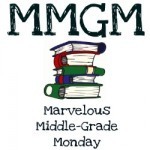 Welcome to Marvelous Middle Grade Monday (MMGM), a weekly event hosted by author Shannon Messenger. For a list of other MMGM posts, click
HERE
.
Welcome to Marvelous Middle Grade Monday (MMGM), a weekly event hosted by author Shannon Messenger. For a list of other MMGM posts, click
HERE
.
___________________________________________
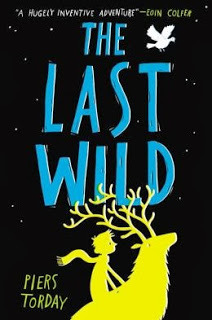 THE LAST WILD
THE LAST WILD
Piers Torday
Viking Juvenile
336 pp.
Ages 8 - 12
Release Date: March 18, 2014
In a world where animals no longer exist, twelve-year-old Kester Jaynes sometimes feels like he hardly exists either. Locked away in a home for troubled children, he's told there's something wrong with him. So when he meets a flock of talking pigeons and a bossy cockroach, Kester thinks he's finally gone crazy. But the animals have something to say. And they need him. The pigeons fly Kester to a wild place where the last creatures in the land have survived. A wise stag needs Kester's help, and together they must embark on a great journey, joined along the way by an overenthusiastic wolf cub, a military-trained cockroach, a mouse with a ritual for everything, and a stubborn girl named Polly. The animals saved Kester Jaynes. But can Kester save the animals?
MY REVIEW:
Lately I've been writing a series of posts called "How To Write A Real Page-Turner." Let me tell you, author Piers Torday has done it. The Last Wild is truly a page-turner. I have to admit that I was unimpressed with the cover design. If I had seen it in a store, I wouldn't have picked it up. The boy with the scarf and the deer with antlers reminded me of Christmas, and I wasn't really in the mood for a Christmas story, which is odd since it is the Christmas season, I know. But I was heading to a doctor appointment and new I'd be sitting around for a while, so I reached into my back of review copies that had been sent to me over the past few weeks, and pulled out The Last Wild.
The Last Wild is a middle grade dystopian novel about a boy taken from his father and locked away for six years in a strange school for troubled children. Kester cannot speak, but soon discovers he can speak telepathically to animals, at least the 'varmits' that survived a plague that wiped out all other animals. These varmits break Kester out, and so begins a fast-paced, edge of your seat quest to find a cure for the plague. The chapters are short and end with gotta-turn-the-page suspense that kids of all ages will love. I am already anxious to read the next book in the series.
All I can say it - Pre-Order this book now!!!
I give The Last Wild a very enthusiastic:





CONTENT REVIEW:
Profanity: None
Sexuality: None
Violence: Moderate
* Book Review: Insurgent by Veronica Roth
* Book Trailer: A Midsummer Night's Dream by Scott Tarbet
 Welcome to Marvelous Middle Grade Monday (MMGM), a weekly event hosted by author Shannon Messenger. For a list of other MMGM posts, click
HERE
.
Welcome to Marvelous Middle Grade Monday (MMGM), a weekly event hosted by author Shannon Messenger. For a list of other MMGM posts, click
HERE
.___________________________________________
 THE LAST WILD
THE LAST WILDPiers Torday
Viking Juvenile
336 pp.
Ages 8 - 12
Release Date: March 18, 2014
In a world where animals no longer exist, twelve-year-old Kester Jaynes sometimes feels like he hardly exists either. Locked away in a home for troubled children, he's told there's something wrong with him. So when he meets a flock of talking pigeons and a bossy cockroach, Kester thinks he's finally gone crazy. But the animals have something to say. And they need him. The pigeons fly Kester to a wild place where the last creatures in the land have survived. A wise stag needs Kester's help, and together they must embark on a great journey, joined along the way by an overenthusiastic wolf cub, a military-trained cockroach, a mouse with a ritual for everything, and a stubborn girl named Polly. The animals saved Kester Jaynes. But can Kester save the animals?
MY REVIEW:
Lately I've been writing a series of posts called "How To Write A Real Page-Turner." Let me tell you, author Piers Torday has done it. The Last Wild is truly a page-turner. I have to admit that I was unimpressed with the cover design. If I had seen it in a store, I wouldn't have picked it up. The boy with the scarf and the deer with antlers reminded me of Christmas, and I wasn't really in the mood for a Christmas story, which is odd since it is the Christmas season, I know. But I was heading to a doctor appointment and new I'd be sitting around for a while, so I reached into my back of review copies that had been sent to me over the past few weeks, and pulled out The Last Wild.
The Last Wild is a middle grade dystopian novel about a boy taken from his father and locked away for six years in a strange school for troubled children. Kester cannot speak, but soon discovers he can speak telepathically to animals, at least the 'varmits' that survived a plague that wiped out all other animals. These varmits break Kester out, and so begins a fast-paced, edge of your seat quest to find a cure for the plague. The chapters are short and end with gotta-turn-the-page suspense that kids of all ages will love. I am already anxious to read the next book in the series.
All I can say it - Pre-Order this book now!!!
I give The Last Wild a very enthusiastic:





CONTENT REVIEW:
Profanity: None
Sexuality: None
Violence: Moderate
Published on December 22, 2013 17:00
December 19, 2013
WRITER 2 WRITER: HOW TO WRITE A REAL PAGE-TURNER, PART IV
* Write A Real Page-Turner, Part 3: Shorter Chapters
* Write A Real Page-Turner, Part 2: Sure-Fire Fun Suckers
* Write A Real Page-Turner, Part 1: What is a Page Turner?
* Book Review: Insurgent by Veronica Roth
Last week I introduced the first of three techniques writers use to make their books page-turners. Today let's look at a second technique:
#2: MULTIPLE POINTS OF VIEW
When I first started writing for children about seven years ago I was told by a certain literary agent that books for middle grade readers must be written in a single point of view (POV). The agent explained that trying to keep track of more than one voice in a story was beyond the ability of most kids, that it would be too confusing.
This didn't make sense to me. I'm a mother of five children, and I had seen for myself how they followed movies and video games with multiple story lines with ease. I decided the agent's advice wasn't given contemporary kids who are multi-tasking masters enough credit.
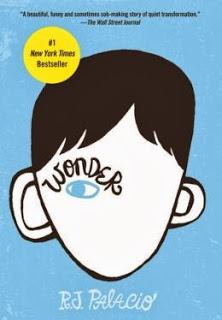 At the same time, I happened to be reading
The Da Vinci Code
by Dan Brown. Brown is the king of page-turners. I read that book in two nights because I literally could not stop reading it. And I asked myself why? So I read it again and studied his techniques. One thing I discovered is that he switches between three points of view, weaving together three story lines which all converge at the climax. Dan Brown writes for adults, but I wondered why couldn't this same technique be applied to a children's novel?
At the same time, I happened to be reading
The Da Vinci Code
by Dan Brown. Brown is the king of page-turners. I read that book in two nights because I literally could not stop reading it. And I asked myself why? So I read it again and studied his techniques. One thing I discovered is that he switches between three points of view, weaving together three story lines which all converge at the climax. Dan Brown writes for adults, but I wondered why couldn't this same technique be applied to a children's novel?
So I wrote my novel, The Rock of Ivanore , with several points of view just to prove it could be done. And guess what? Kids love it.
Today writing from multiple points of view has become more acceptable in the world of children's books. Most recently, Wonder by R.J. Palacio has taken the country by storm. This story about a boy with a disfigured face has six distinct voices. Above World and Mirage by Jenn Reese each have two POVs, as does Rick Riordan's The Red Pyramid . The Candymakers by Wendy Mass has four.
TRY IT OUT:
Write a brief scene (a paragraph to one page) from one of the perspective of one of the characters below. Use the following to get you started. The re-write the exact same scene from a different character's POV.
Prompt: Two characters argue over an object, each one claiming it belongs to him/her.
Characters: •12-year-old boy in a wheelchair • 18-year-old girl with spiky blue hair • middle-aged African American woman from the south • 80-year-old homeless man • school librarian • famous action movie star • twin siblings • a scientist • a young mother with three small children
* Be sure to stop by next week for Part V of How To Write A Real Page-Turner, and discover the third and final page-turner technique!
Last week I introduced the first of three techniques writers use to make their books page-turners. Today let's look at a second technique:
#2: MULTIPLE POINTS OF VIEW
When I first started writing for children about seven years ago I was told by a certain literary agent that books for middle grade readers must be written in a single point of view (POV). The agent explained that trying to keep track of more than one voice in a story was beyond the ability of most kids, that it would be too confusing.
This didn't make sense to me. I'm a mother of five children, and I had seen for myself how they followed movies and video games with multiple story lines with ease. I decided the agent's advice wasn't given contemporary kids who are multi-tasking masters enough credit.
 At the same time, I happened to be reading
The Da Vinci Code
by Dan Brown. Brown is the king of page-turners. I read that book in two nights because I literally could not stop reading it. And I asked myself why? So I read it again and studied his techniques. One thing I discovered is that he switches between three points of view, weaving together three story lines which all converge at the climax. Dan Brown writes for adults, but I wondered why couldn't this same technique be applied to a children's novel?
At the same time, I happened to be reading
The Da Vinci Code
by Dan Brown. Brown is the king of page-turners. I read that book in two nights because I literally could not stop reading it. And I asked myself why? So I read it again and studied his techniques. One thing I discovered is that he switches between three points of view, weaving together three story lines which all converge at the climax. Dan Brown writes for adults, but I wondered why couldn't this same technique be applied to a children's novel?So I wrote my novel, The Rock of Ivanore , with several points of view just to prove it could be done. And guess what? Kids love it.
Today writing from multiple points of view has become more acceptable in the world of children's books. Most recently, Wonder by R.J. Palacio has taken the country by storm. This story about a boy with a disfigured face has six distinct voices. Above World and Mirage by Jenn Reese each have two POVs, as does Rick Riordan's The Red Pyramid . The Candymakers by Wendy Mass has four.
TRY IT OUT:
Write a brief scene (a paragraph to one page) from one of the perspective of one of the characters below. Use the following to get you started. The re-write the exact same scene from a different character's POV.
Prompt: Two characters argue over an object, each one claiming it belongs to him/her.
Characters: •12-year-old boy in a wheelchair • 18-year-old girl with spiky blue hair • middle-aged African American woman from the south • 80-year-old homeless man • school librarian • famous action movie star • twin siblings • a scientist • a young mother with three small children
* Be sure to stop by next week for Part V of How To Write A Real Page-Turner, and discover the third and final page-turner technique!
Published on December 19, 2013 21:13
December 14, 2013
WRITER 2 WRITER: HOW TO WRITE A REAL PAGE-TURNER, PART 3
* Book Review: Insurgent by Veronica Roth
* Write a Real Page-Turner, Part I
* Write a Real Page-Turner, Part II
In Part One, I defined what being a Page-Turner is and why writers should seriously consider writing one. In Part Two I shared 5 Sure Fire Fun-Suckers, things that make books boring. Today I will discus the first of three Page-Turner Techniques that are sure to make your work in progress a "can't-put-it-down" book.
#1. SHORTER CHAPTERS
Seems obvious, doesn't it? But the truth is that you will simply lose many readers after just a few pages. How many times have you opened a book and counted the pages in a particular chapter to see if you really felt like committing yourself to it? Chances are if the chapter was too long, you put the book down and reached for something else.
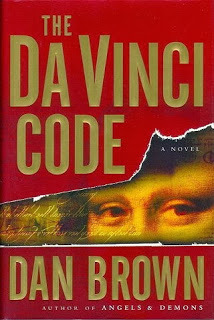
Pick up a few books you consider "page-turners." Chances are most of them have pretty short chapters. For example, Dan Brown's The DaVinci Code has chapters as short as a single page. The overall length of two books may be exactly the same, but the fact remains that short chapters achieve two very important things for your reader:
Creates the illusion of a "fast read."
Increases the likelihood that the reader
will read multiple chapters in a single sitting.
When asked about whether or not the act of reading books is in danger of giving way to electronic media, Author Hernan Casciari said the following:
“What’s important right now is our lack of concentration, our inability to be able to read, listen or write for more than 20 minutes."
Actually, Casciari hit the nail on the head, and here's why.
In 2012, the Associated Press published research revealing that the attention span of the average person (adult or child) is a mere 8 second. 8 seconds!!! That's how long you have to capture your readers' attention--and KEEP IT!
To give you an idea of what we're up against, in the year 2000 the average attention span was 12 seconds, and the attention span of a goldfish is 9 seconds.
Now, we can bemoan the damage to our brains caused by video games and TV shows all we want, but as writers we need to look at this information through different lenses. Our readers' attention spans are shrinking. So the question is not how do we stop this, but how can best reach our readers on their level?
Try It Out!
If you are working on a manuscript right now, try these tweaks to help make your story more "bite-sized."
1. Write chapters that are between 3 - 5 pages.
2. Divide longer chapters into two or more shorter chapters.
3. Utilize Framing Devices to separate scenes within a longer chapter.
-White Space (add an extra blank line between scenes)
-Varied Font (use italics to identify quotes, different forms of text such as journal entries or letters, or for dreams, flash backs, etc.)
-Asterisks (can be used within white space to separate scenes)
Come back next Friday for the 2nd Page-Turner Technique!
* Write a Real Page-Turner, Part I
* Write a Real Page-Turner, Part II
In Part One, I defined what being a Page-Turner is and why writers should seriously consider writing one. In Part Two I shared 5 Sure Fire Fun-Suckers, things that make books boring. Today I will discus the first of three Page-Turner Techniques that are sure to make your work in progress a "can't-put-it-down" book.
#1. SHORTER CHAPTERS
Seems obvious, doesn't it? But the truth is that you will simply lose many readers after just a few pages. How many times have you opened a book and counted the pages in a particular chapter to see if you really felt like committing yourself to it? Chances are if the chapter was too long, you put the book down and reached for something else.

Pick up a few books you consider "page-turners." Chances are most of them have pretty short chapters. For example, Dan Brown's The DaVinci Code has chapters as short as a single page. The overall length of two books may be exactly the same, but the fact remains that short chapters achieve two very important things for your reader:
Creates the illusion of a "fast read."
Increases the likelihood that the reader
will read multiple chapters in a single sitting.
When asked about whether or not the act of reading books is in danger of giving way to electronic media, Author Hernan Casciari said the following:
“What’s important right now is our lack of concentration, our inability to be able to read, listen or write for more than 20 minutes."
Actually, Casciari hit the nail on the head, and here's why.
In 2012, the Associated Press published research revealing that the attention span of the average person (adult or child) is a mere 8 second. 8 seconds!!! That's how long you have to capture your readers' attention--and KEEP IT!
To give you an idea of what we're up against, in the year 2000 the average attention span was 12 seconds, and the attention span of a goldfish is 9 seconds.
Now, we can bemoan the damage to our brains caused by video games and TV shows all we want, but as writers we need to look at this information through different lenses. Our readers' attention spans are shrinking. So the question is not how do we stop this, but how can best reach our readers on their level?
Try It Out!
If you are working on a manuscript right now, try these tweaks to help make your story more "bite-sized."
1. Write chapters that are between 3 - 5 pages.
2. Divide longer chapters into two or more shorter chapters.
3. Utilize Framing Devices to separate scenes within a longer chapter.
-White Space (add an extra blank line between scenes)
-Varied Font (use italics to identify quotes, different forms of text such as journal entries or letters, or for dreams, flash backs, etc.)
-Asterisks (can be used within white space to separate scenes)
Come back next Friday for the 2nd Page-Turner Technique!
Published on December 14, 2013 14:10
December 11, 2013
BOOK REVIEW: INSURGENT by Veronica Roth
* How To Write A Real Page-Turner, Part I
* Interview with author Scott Tarbet
* Book Review: Divergent by Veronica Roth
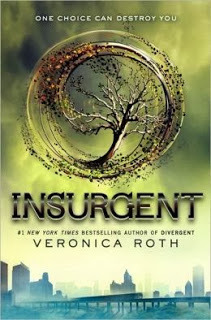 INSURGENT
INSURGENT
Veronica Roth
HarperCollins
Ages 14-17
One choice can transform you—or it can destroy you. But every choice has consequences, and as unrest surges in the factions all around her, Tris Prior must continue trying to save those she loves—and herself—while grappling with haunting questions of grief and forgiveness, identity and loyalty, politics and love.
Tris's initiation day should have been marked by celebration and victory with her chosen faction; instead, the day ended with unspeakable horrors. War now looms as conflict between the factions and their ideologies grows. And in times of war, sides must be chosen, secrets will emerge, and choices will become even more irrevocable—and even more powerful. Transformed by her own decisions but also by haunting grief and guilt, radical new discoveries, and shifting relationships, Tris must fully embrace her Divergence, even if she does not know what she may lose by doing so.
MY REVIEW:
With all the buzz surrounding the upcoming release of the DIVERGENT film, I thought I ought to finish reading the series before going to see the movie. I listened to both Divergent and Insurgent via Audible on my Ipod.
Fans of The Hunger Games are probably going to be drawn to the Divergent series. There are many similarities due to the dystopian genre and the high level of violence and action, and many parallels can be drawn between the characters. Tris, the protagonist in Divergent, is tough as nails and is drawn to the Dauntless faction by her talent for weapons and combat.Tobias is aloof and strong, yet fiercely loyal to Tris. But what left me feeling a bit disappointed is the absence of powerful emotional connections and an overarching grand theme.
What I loved about The Hunger Games trilogy is that Katniss is thrown into the arena out of her devotion to her sister, Prim. She willingly puts herself between danger and those she loves. Love is the motivating force between everything she does. Tris has no deep, emotional driving force. She is, instead, searching for her own identity, her own place in her society. There is nothing wrong with that, of course.But I mention this here because the fact is the two series are being compared.
Also, The Hunger Games managed to weave contemporary concerns and issues of government control, the value of life, and class inequality into a very entertaining speculative fiction tapestry. Having finished Insurgent, I haven't yet seen any themes that can be easily applied to our own real society. Again, nothing wrong with that. The book is completely exciting and action-packed. And I enjoyed it. But where The Hunger Games still has me thinking about it and wanting to go back to read it again and again, I am not feeling the same about Insurgent and Divergent.
Okay. Having said all that, and putting the comparisons aside, Insurgent is a worthy follow-up to Roth's first book. It has all the intensity and suspense and action I expected. Not a lot of surprises, but it kept me interested all the way through. I will finish the series with the newly released Allegience, and then treat myself to some popcorn at the movies.
My overall rating of Insurgent:



 CONTENT RATING:
CONTENT RATING:
Profanity: NoneSexuality: MildViolence: High
* Interview with author Scott Tarbet
* Book Review: Divergent by Veronica Roth
 INSURGENT
INSURGENTVeronica Roth
HarperCollins
Ages 14-17
One choice can transform you—or it can destroy you. But every choice has consequences, and as unrest surges in the factions all around her, Tris Prior must continue trying to save those she loves—and herself—while grappling with haunting questions of grief and forgiveness, identity and loyalty, politics and love.
Tris's initiation day should have been marked by celebration and victory with her chosen faction; instead, the day ended with unspeakable horrors. War now looms as conflict between the factions and their ideologies grows. And in times of war, sides must be chosen, secrets will emerge, and choices will become even more irrevocable—and even more powerful. Transformed by her own decisions but also by haunting grief and guilt, radical new discoveries, and shifting relationships, Tris must fully embrace her Divergence, even if she does not know what she may lose by doing so.
MY REVIEW:
With all the buzz surrounding the upcoming release of the DIVERGENT film, I thought I ought to finish reading the series before going to see the movie. I listened to both Divergent and Insurgent via Audible on my Ipod.
Fans of The Hunger Games are probably going to be drawn to the Divergent series. There are many similarities due to the dystopian genre and the high level of violence and action, and many parallels can be drawn between the characters. Tris, the protagonist in Divergent, is tough as nails and is drawn to the Dauntless faction by her talent for weapons and combat.Tobias is aloof and strong, yet fiercely loyal to Tris. But what left me feeling a bit disappointed is the absence of powerful emotional connections and an overarching grand theme.
What I loved about The Hunger Games trilogy is that Katniss is thrown into the arena out of her devotion to her sister, Prim. She willingly puts herself between danger and those she loves. Love is the motivating force between everything she does. Tris has no deep, emotional driving force. She is, instead, searching for her own identity, her own place in her society. There is nothing wrong with that, of course.But I mention this here because the fact is the two series are being compared.
Also, The Hunger Games managed to weave contemporary concerns and issues of government control, the value of life, and class inequality into a very entertaining speculative fiction tapestry. Having finished Insurgent, I haven't yet seen any themes that can be easily applied to our own real society. Again, nothing wrong with that. The book is completely exciting and action-packed. And I enjoyed it. But where The Hunger Games still has me thinking about it and wanting to go back to read it again and again, I am not feeling the same about Insurgent and Divergent.
Okay. Having said all that, and putting the comparisons aside, Insurgent is a worthy follow-up to Roth's first book. It has all the intensity and suspense and action I expected. Not a lot of surprises, but it kept me interested all the way through. I will finish the series with the newly released Allegience, and then treat myself to some popcorn at the movies.
My overall rating of Insurgent:



 CONTENT RATING:
CONTENT RATING:
Profanity: NoneSexuality: MildViolence: High
Published on December 11, 2013 00:00
December 6, 2013
WRITER 2 WRITE: HOW TO WRITE A REAL PAGE- TURNER, PART 2
* How To Write A Real Page-Turner, Part 1
* Win a copy of A MIDSUMMER NIGHT'S STEAMPUNK
* Blockbuster Death Nell: End of an Era?
The sub-title of this post is "5 Sure Fire Fun-Suckers." This is what my son calls books that are too boring to read all the way through.
As authors, we don't want our books to be boring. We want readers to feel excited about our stories, to keep turning those pages. So what can we do to make our books real page-turners? Well, first we should know what NOT to do.
Here are the top 5 fun-suckers:
1. EXCESSIVELY LONG CHAPTERS
My 11-year-old daughter was recently assigned a Newbery Award winning book to read for class. It's a great book. I know because I've read it. But she is slogging through it, groaning the whole way. I asked her why she didn't like the book. Her answer: "The chapters are so looooooong!"
While many readers do enjoy long, detailed chapters, the fact is that shorter chapters create the illusion, if not reality, of a faster read. Every time a reader gets to the end of a chapter he feels like he's accomplished something, that progress is being made. When the chapters are short, a reader will be more willing to read on into the next chapter, and the next.
 2. WAKING AND SLEEPING
2. WAKING AND SLEEPING
When writing scenes, new writers often fall into the trap of starting a scene when a character wakes up and ending it when they go to sleep. Boring. In essence, if your character falls asleep, so will your reader. This also holds true for going unconscious. Nothing is more aggravating for a reader than when there has been all this build up to a climatic moment only to have the protagonist black out and wake up when the action is over. Don't cheat your reader that way.
3. TIDY CHAPTER ENDINGS
While closure is good at the end of a novel, too much closer at the end of chapters creates the sense that this is a good point to stop reading. Page-turners do not have tidy chapter endings. They are messy. They are exciting. They leave you hanging. The goal is for readers to reach the end of a chapter and feel compelled to turn the page to see what happens next. We will discuss this in greater detail when I post Part 3 of this series.
4. UNVARYING PACE
Reading a novel is not like long distance running, where the runner sets his pace and keeps that same rhythm for miles and miles. Nor is it a sprint to the finish line, one quick heart-pounding dash. If a story is slow and detailed and thoughtful all the way through, the reader will get bored. But the reader will also get burned out if there is nothing but action-packed thrill on every single page. You want to vary the pace, with some chapters being fast and exciting, and others slower and more introspective. These slower scenes allow your reader to catch their breath, so to speak, to recharge for the next adrenalin surge.
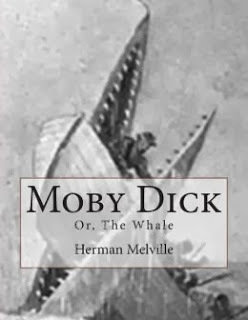 5. TOO MUCH DESCRIPTION
5. TOO MUCH DESCRIPTION
Long ago authors used to be paid on the word. The longer the book, the more money they earned. So books were tomes of lengthy descriptions that really had nothing to do with the plot. Times have changed. We live a fast-paced society where we are used to getting what we want right now. Many readers expect to get to the heart of the story without having to slog through pages of unnecessary description. Of course some description is important to set the scene, but where authors once would expound about a woman's dress or the architecture of a building for pages on end, now a line or two, or even is some cases a few words will do just as well. Leave the rest up to your readers' imagination.
So there you have them. 5 Sure Fire Fun-Suckers, and some tips on how to avoid them. Next Friday in Part 3 we will delve into the 3 Top Page-Turner Techniques. See you then!
* Win a copy of A MIDSUMMER NIGHT'S STEAMPUNK
* Blockbuster Death Nell: End of an Era?
The sub-title of this post is "5 Sure Fire Fun-Suckers." This is what my son calls books that are too boring to read all the way through.
As authors, we don't want our books to be boring. We want readers to feel excited about our stories, to keep turning those pages. So what can we do to make our books real page-turners? Well, first we should know what NOT to do.
Here are the top 5 fun-suckers:
1. EXCESSIVELY LONG CHAPTERS
My 11-year-old daughter was recently assigned a Newbery Award winning book to read for class. It's a great book. I know because I've read it. But she is slogging through it, groaning the whole way. I asked her why she didn't like the book. Her answer: "The chapters are so looooooong!"
While many readers do enjoy long, detailed chapters, the fact is that shorter chapters create the illusion, if not reality, of a faster read. Every time a reader gets to the end of a chapter he feels like he's accomplished something, that progress is being made. When the chapters are short, a reader will be more willing to read on into the next chapter, and the next.
 2. WAKING AND SLEEPING
2. WAKING AND SLEEPINGWhen writing scenes, new writers often fall into the trap of starting a scene when a character wakes up and ending it when they go to sleep. Boring. In essence, if your character falls asleep, so will your reader. This also holds true for going unconscious. Nothing is more aggravating for a reader than when there has been all this build up to a climatic moment only to have the protagonist black out and wake up when the action is over. Don't cheat your reader that way.
3. TIDY CHAPTER ENDINGS
While closure is good at the end of a novel, too much closer at the end of chapters creates the sense that this is a good point to stop reading. Page-turners do not have tidy chapter endings. They are messy. They are exciting. They leave you hanging. The goal is for readers to reach the end of a chapter and feel compelled to turn the page to see what happens next. We will discuss this in greater detail when I post Part 3 of this series.
4. UNVARYING PACE
Reading a novel is not like long distance running, where the runner sets his pace and keeps that same rhythm for miles and miles. Nor is it a sprint to the finish line, one quick heart-pounding dash. If a story is slow and detailed and thoughtful all the way through, the reader will get bored. But the reader will also get burned out if there is nothing but action-packed thrill on every single page. You want to vary the pace, with some chapters being fast and exciting, and others slower and more introspective. These slower scenes allow your reader to catch their breath, so to speak, to recharge for the next adrenalin surge.
 5. TOO MUCH DESCRIPTION
5. TOO MUCH DESCRIPTIONLong ago authors used to be paid on the word. The longer the book, the more money they earned. So books were tomes of lengthy descriptions that really had nothing to do with the plot. Times have changed. We live a fast-paced society where we are used to getting what we want right now. Many readers expect to get to the heart of the story without having to slog through pages of unnecessary description. Of course some description is important to set the scene, but where authors once would expound about a woman's dress or the architecture of a building for pages on end, now a line or two, or even is some cases a few words will do just as well. Leave the rest up to your readers' imagination.
So there you have them. 5 Sure Fire Fun-Suckers, and some tips on how to avoid them. Next Friday in Part 3 we will delve into the 3 Top Page-Turner Techniques. See you then!
Published on December 06, 2013 08:46

